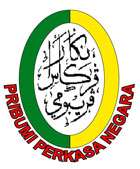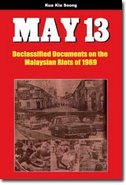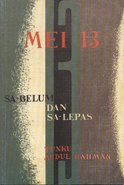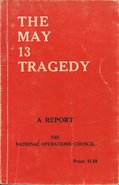 Di laman web Malaysia Today di bawah tulisan berjudul "An Appeal To Malay Rulers", seorang komentar bergelar Suzie Q memberi pendapat yang telah memberi tanggapan kepada seorang komentar lain, dragonheart bahawa raja-raja Melayu adalah kerajaan baru dalam sejarah.
Di laman web Malaysia Today di bawah tulisan berjudul "An Appeal To Malay Rulers", seorang komentar bergelar Suzie Q memberi pendapat yang telah memberi tanggapan kepada seorang komentar lain, dragonheart bahawa raja-raja Melayu adalah kerajaan baru dalam sejarah.Jawapan dragonheart yang bertujuan memberi sokongan dan legitimasi sejarah kepada Raja-Raja Melayu untuk bertindak terhadap kepimpinan kerajaan sekarang yang lemah juga telah membantu menyangkal tuduhan bahawa orang-orang Melayu dan kaum asal lain bukan Bumiputera negara ini. Ini adalah andaian yang pernah dilaungkan Lee Kuan Yew di Parlimen Malaysia pada tahun 1964 dan menjadi hujah rasis kaum tertentu yang sering mempertingkatkan semangat perkauman dikalangan mereka dari dahulu hingga sekarang.
Jawapan dragonheart itu adalah seperti berikut:
Who says our Malay Rulers are new? The Malay Rulers had been established long before the portugese came in 1511.Our Malay Rulers are unique too and I would never want to compare our Malay Rulers with the Briton's. And I will never underestimate the events that shaped the Malays rulers as we see today.
Proto-Malays originating from Java began arriving between 1500 BC and 500 BC. There were numerous Malay kingdoms in the 2nd and 3rd century CE—as many
as 30 according to Chinese sources.
There are reports of other areas older than Kedah—the ancient kingdom of Gangganegara, around Bruas in Perak, for instance, pushes Malaysian history even further into antiquity. If that is not enough, a Tamil poem, Pattinapillai, of the second century CE, describes goods from Kadaram heaped in the broad streets of the Chola capital; a seventh century Sanskrit drama, Kaumudhimahotsva, refers to Kedah as Kataha-nagari. The Agnipurana also mentions a territory known Anda-Kataha with one of its boundaries delineated by a peak, which scholars believe is Gunong Jerai. Stories from the Katasaritasagaram describe the elegance of life in Kataha.
Most of the history book only goes to the early 15th century, where the Sultanate of Malacca was established under a dynasty founded by Parameswara, a prince from Palembang with bloodline related to the royal home of Srivijaya, who fled from the island Temasek (now Singapore).
The first evidence of Islam in the Malay peninsula dates from the 14th century in Terengganu, but according to the Kedah Annals, the 9th Maharaja Derbar Raja di of Sultanate of Kedah converted to Islam and changed his name to Sultan Muzaffar Shah. Since then there have been 27 Sultans who ruled Kedah.
When Malacca was conquered by Portugal in 1511, the sons of the last Sultan of Malacca established two sultanates elsewhere in the peninsula—the Sultanate of Perak to the north, and the Sultanate of Johor (originally a continuation of the old Malacca sultanate) to the south.
After the fall of Malacca, three nations struggled for the control of Malacca Strait: the Portuguese (in Malacca), the Sultanate of Johor, and the Sultanate of Aceh. This conflict went on till 1641, when the Dutch (allied to the Sultanate of Johor) gained control of Malacca.
Britain established its first colony in the Malay peninsula in 1786 (in a way they cheated the sultan of Kedah to take over Penang)
During the late 19th century, many Malay states decided to obtain British help in settling their internal conflicts. British gunboat diplomacy was employed to bring about a peaceful resolution to civil disturbances caused by Chinese gangsters, and the Pangkor Treaty of 1874 paved the way for the expansion of British influence in
Malaya.
By the turn of the 20th century, the states of Pahang, Selangor, Perak, and Negeri Sembilan, known together as the Federated Malay States.
The remaining five states in the peninsula, known as the Unfederated Malay States, while not directly under rule from London, also accepted British advisors around the turn of the 20th century. Of these, the four northern states of Perlis, Kedah, Kelantan and Terengganu had previously been under Siamese control.
Post-war British plans to unite the administration of Malaya under a single crown colony called the Malayan Union foundered on strong opposition from the Malays, who opposed the emasculation of the Malay rulers and the granting of citizenship to the ethnic Chinese.
The Malays opposed the creation of the Union. The opposition was mainly due to the way Sir Harold MacMichael acquired the Sultans’ signatures, the erosion of the Sultans’ powers and the offering of citizenship to recent immigrants mainly the ethnic Chinese because their economic dominance was seen as a threat to the economic development of the Malays and the British transformed of the title Sultan to President.
But due to the retaliations of the Malays to protect their Malay Rulers, their Islamic Religion and their soil, Alhamdulillah, all the Malay Rulers are still here to stay. The Malay Rulers too have traditions which goes back even more than 1,000 years.

Raja-Raja Melayu telah mengadakan Durbar yang pertama di Istana Kuala Kangsar pada tahun 1897. Majlis ini dihadiri oleh Sultan Alaiddin Sulaiman Shah (Selangor), Sultan Idris Murshidul 'Adzam Shah (Perak), Yam Tuan Tuanku Muhammed Shah (Negeri Sembilan), dan Sultan Ahmad Mua'adzam Shah (Pahang) merupakan mesyuarat penubuhan Persekutuan Negeri-Negeri Melayu (Federated Malay States). Raja-Raja Melayu yang lain menyertai Majlis ini kemudian. Perjumpaan ini merupakan asas untuk Majlis Raja-Raja yang dibentuk di bawah Artikel 38 Perlembagaan Persekutuan Tanah Melayu bertarikh Ogos 27hb, 1957.
Jawapan ini memperkuatkan hujah berkenaan hak dan institusi orang-orang Melayu di negara ini. Raja-raja Melayu, sebagai pelindung orang-orang Melayu, telah memberi legitimasi kepada kemerdekaan dan hak-hak orang Melayu kerana mereka adalah penandatangan dalam pelbagai perjanjian dengan British.
Hujah ini juga memperkuatkan lagi hujah sebelum ini yang juga menyangkal akuan Lee Kuan Yew itu. Sentiasa berbalik kita kepada sejarah kerana di situ terletaknya kebenaran dan juga di mananya hak dan batil.
* Maklumat seterusnya mengenai Persekutuan Negeri-Negeri Melayu boleh diperolehi di Wikipedia di sini.
























1 ulasan:
betulkah perlembagaan malaysia adalah kontrak sosial yang menyatukan rakyat malaysia? dari segi ape yg menunjukkan ia menyatukan rakyat? hubungan sesama rakyat di m'sia kian tegang.. apa yg boleh digunakan dlm perlembagaan utk menyatukannya kembali... adakah perlembagaan m'sia kontrak sosial yang lengkap dan bagus utk diaplikasikan sekarang ini berbanding dgn dulu...
Catat Ulasan